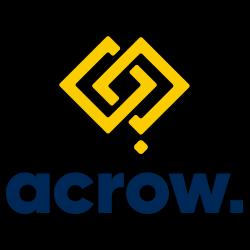
Acrow V-shore
The Acrow V-Shore System is a simple three component system which uses frames, braces and jacks and offers the benefits of saving costs on inventory, improved productivity and design versatility.
It is the ideal system for civil engineering projects such as the construction of highway bridges or the laying of heavy slabs or beams.
Calculated Values
Working load capacity per leg
1 kN
Maximum eccentricity
1 mm
Figure
Notes and Conditions
- The Working Load Capacity shown below is based on two frames high. Seek advice from Acrow’s Engineering for stacking frames.
- The cross braces must always be used to connect two frames together at specified and specific locations.
- Plastic spacer nuts must be used with all solid jacks.
- Frame connectors must be used when connecting frames vertically together. 16mm pins with clips or M16 bolts & nuts must be used if there are any uplift forces in the falsework system or if the assembly requires crane handling.
- Eccentricity of the load action on the U-Head must not exceed 15mm on 914–1829mm and 10mm on 2140mm.
- Maximum out of plumb of any V-SHORE assembly shall not exceed height/200 or 40mm, whichever is less.
- Additional bracings must be provided to resist horizontal forces.
- Load charts are valid where V-SHORE frames are supported on suitable footing and foundation with adequate bearing capacity to resist imposed design leg loads. No allowance has been made for differential settlement.
- Limit state conversion factor = 1.4.
- Where V-Shore frames are stacked, additional lateral bracing is required. Structural engineer to specify suitable bracing to ensure adequate frame stability.
The table is not uploaded or the values for the variables: do not match table records.
The table is not uploaded or the values for the variables: do not match table records.
Usage Recommendations
- V-Shore frames should not be used without either an adjustable base or base plate inserted in the bottom legs of the frame or tower.
- Two cross braces must be used to connect two frames together at the specified location at all times.
- Plastic spacer nuts must be screwed onto the ends of solid stem (36 mm dia) adjustable bases or adjustable U-heads when inserted in the legs of V-Shore frames to minimise the clearance and restrain the end of the adjustable base or U-Head.
- Sole plates with adequate stiffness and size to evenly transfer the applied loads to the foundation should be used under adjustable bases or base plates when bearing on foundations other than concrete.
- Ensure that the adjustable base or the base plate is in full contact with their support (soleplate or concrete slab).
- Falsework assembly must be supported on sound foundation material which prevents settlement and has adequate bearing capacity to support the applied leg loads.
- Stability of the falsework and formwork assemblies must be maintained at all times and, if necessary, additional bracing and anchoring must be provided.
- Do not use equipment in conjunction with the falsework which would apply dynamic forces unless they are allowed for in the falsework/formwork design.
- Frame connectors must be used to connect frames vertically; connecting pins (16 mm) must be inserted through the frame leg and the frame connector and locked with a spring clip if the tower is to be crane handled or there is any uplift forces in the falsework system.
- Frames must be assembled the right way up, with the latch pins vertical under gravity.

Figure:
Latch pin

Framing

Tubular Cross Bracing

Frame Connector

Base Plate

Tubular Adjustable Bases

Solid Adjustable Bases
